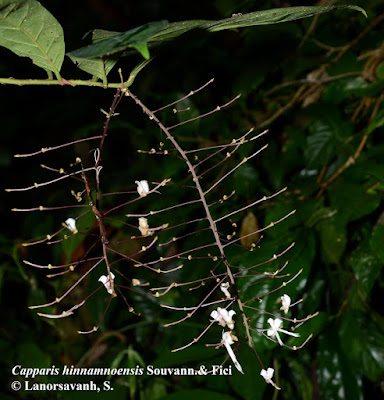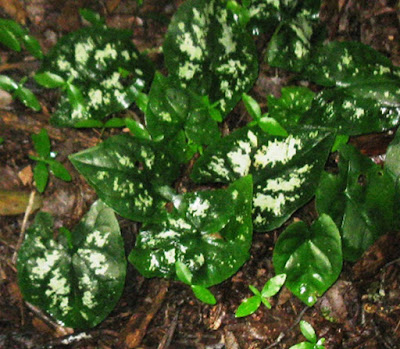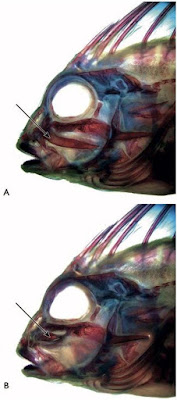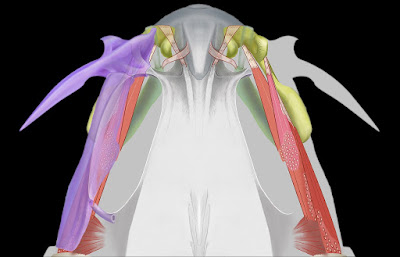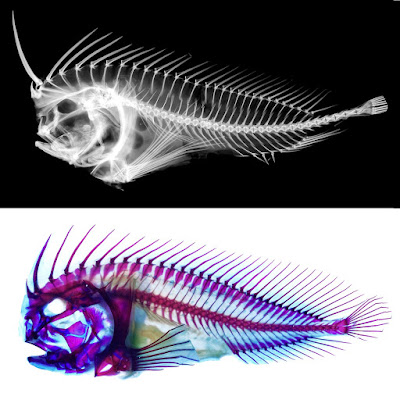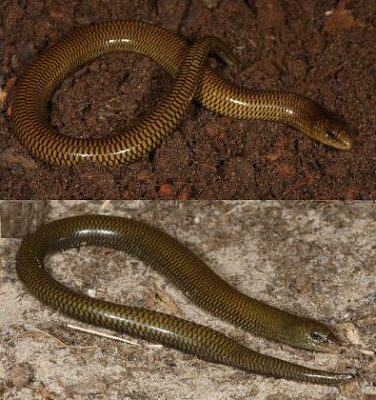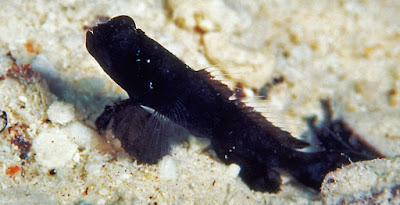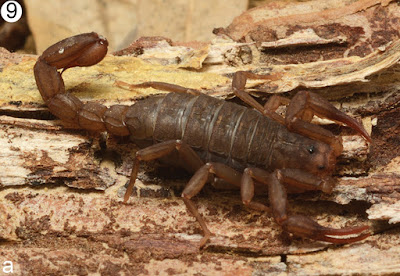[Most Recent Entries] [Calendar View]
Tuesday, June 5th, 2018
| Time | Event | ||||||||
| 2:53a | [Botany • 2018] Capparis hinnamnoensis (Capparaceae) • A New Species from the Deciduous Forest of the Hin Nam No National Protected Area, central Laos [Studies on the Genus Capparis L. in Lao PDR. III]
Abstract A new species of Capparis, Capparis hinnamnoensis, is described from the Khammouan Province, central Lao PDR. The new species is characterized by the indumentum constituted by stellate, two-armed and simple hairs, and by the terminal racemes bearing trifid bracts and medium-sized flowers. It is so far known from a single locality in the Hin Nam No National Protected Area, where it has been observed in the deciduous forest on Permo-Carboniferous limestone. Its conservation status is assessed. Key words: Capparis sect. Monostichocalyx, ecology, endemism, Khammouan Province, phenology
Capparis hinnamnoensis Souvann. & Fici Diagnosis: A C. assamica Hook. f. & Thomson pilis stellatis, bracteis trifidis, pedicellis longioribus, petalis maioribus, staminibus et gynophoro longioribus differt. ....
Keooudone Souvannakhoummane, Silvio Fici, Soulivanh Lanorsavanh and Vichith Lamxay. 2018. Studies on the Genus Capparis L. (Capparaceae) in Lao PDR. III: A New Species from the Deciduous Forest of the Hin Nam No National Protected Area. Webbia. DOI: 10.1080/00837792.2018.1470708 researchgate.net/publication/325385907__ | ||||||||
| 3:01a | [Botany • 2018] Idimanthus amorphophalloides • A New Aroid Genus (Araceae-Caladieae) from Rio de Janeiro State, Brazil
Abstract The monotypic genus Idimanthus (Araceae-Caladieae), represented by the species Idimanthus amorphophalloides, is here described and illustrated. It differs from all Caladieae by its connective ending in a rostrate beak turned downward, but the combination of cormous geophytic stem, copious endosperm, densely arranged fertile flowers and sterile flowers densely arranged in an apical appendix did not match any other genera in the tribe. It was collected in a marble outcrop in Northern Rio de Janeiro state, in the county of Italva, nearby the city of Cardoso Moreira as an understory herb. The aspect of leafless inflorescences with a long apical staminoidal area appearing directly from the soil is remarkably peculiar for Southeastern Brazilian aroids. Keywords: Atlantic forest, geophyte, rocky outcrop, Monocots
Idimanthus E.G.Gonç. gen. nov. Eponymy:–– The generic name honors Idimá Gonçalves da Costa, an active plant collector from Rio de Janeiro, which spotted this plant in the wild for the first time and cultivated it. Idimanthus amorphophalloides E.G. Gonç., sp. nov. Etymology:— The specific epithet aludes the resemblance with a miniature specimen of the aroid genus Amorphophallus, mainly because of its peculiar habit of flowering much before any sight of the leaves. Eduardo G. Gonçalves. 2018. Idimanthus: A New Aroid Genus (Araceae—Caladieae) from Rio de Janeiro State, Brasil. Phytotaxa. 351(1); 88–92. DOI: 10.11646/hytotaxa.351.1.8 | ||||||||
| 8:30a | [Ichthyology • 2018] Phylogeny and Taxonomy of Scorpionfishes, Flatheads, Sea Robins, and Stonefishes (Percomorpha: Scorpaeniformes) and the Evolution of the Lachrymal Saber
We report on the discovery of a remarkable defensive specialization in stonefishes that was identified during a phylogenetic study of scorpionfishes and their relatives. This newly described innovation, the lachrymal saber, involves modifications to the circumorbitals, maxilla, adductor mandibulae, and associated tendons. At its core, the lachrymal saber is an elongation of an anterior spine (or spines) on the ventral surface of the lachrymal that stonefishes are capable of rotating from the standard ventral position to a locked lateral position. The locking mechanism minimally includes a bony spur on the inner surface of the lachrymal and a ridged bony protuberance on the anterolateral end of the maxilla. A modified and highly subdivided adductor mandibulae appears to control the movement of the lachrymal saber by rotating the maxilla while it is engaged with the spur on the medial side of the lachrymal. This maxillary rotation results in a subsequent rotation of the lachrymal that we hypothesize reduces predation on stonefishes. This specialization was included in our phylogenetic analysis of scorpaenoid fishes. This study expands upon the previous higher-level taxonomic sampling reported in earlier evolutionary studies of scorpaenoid fishes and, unlike previous analyses, explicitly combines molecular and morphological data with an expanded taxonomic sampling to mitigate the conflict between these competing datasets. The resulting phylogeny based on a combination of 113 morphological and 5,280 molecular characters for 63 species is used to produce a revised taxonomy of flatheads, scorpionfishes, sea robins, and stonefishes. Our results do not support the monophyly of the traditional Scorpaeniformes, Scorpaenoidei, Scorpaenoidea, Platycephaloidea, Bembridae, Scorpaenidae, Sebastidae, Serranidae, Tetrarogidae, or Triglidae. Our monophyletic taxonomy recognizes nine monophyletic families: Bembridae, Congiopodidae, Hoplichthyidae, Neosebastidae, Platycephalidae, Plectrogeniidae, Scorpaenidae, Synanceiidae, and Triglidae. The taxonomic composition of the Congiopodidae, Hoplichthyidae, Neosebastidae, and Platycephalidae are unchanged. The Bembridae is expanded to include the recently described Parabembridae, while Bembradium is moved to the Plectrogeniidae. The Scorpaenidae is expanded to include the traditional Sebastidae and Setarchidae. The Triglidae is expanded to include the Peristediidae. Finally, a revised Synanceiidae, diagnosed by the lachrymal saber, is expanded to include the Apistidae, Aploactinidae, Eschmeyeridae, Gnathanacanthidae, Pataecidae, Perryenidae, and Tetrarogidae. Based on these results, we recommend treating all of these traditional scorpaenoid clades as families in an expanded Scorpaeniformes that includes a restricted Scorpaenoidei that includes all traditional scorpaenoid families except the Congiopodidae. The resulting phylogeny is then used to explore aspects of scorpaenoid evolution.
W. Leo Smith, Elizabeth Everman and Clara Richardson. 2018. Phylogeny and Taxonomy of Flatheads, Scorpionfishes, Sea Robins, and Stonefishes (Percomorpha: Scorpaeniformes) and the Evolution of the Lachrymal Saber. Copeia. 106(1); 94-119. DOI: 10.1643/CG-17-669 Discovery of Switchblade-like Defensive System Redraws Family Tree of Stonefishes | ||||||||
| 8:55a | [Herpetology • 2018] Acontias albigularis & A. wakkerstroomensis • Two New Species of Acontias (Scincidae: Acontinae) from the Mpumalanga Highveld Escarpment of South Africa
Abstract The African genus of fossorial legless lizards (Acontias Cuvier) currently comprises 26 species and subspecies. In a recent study on the two disjunct populations of Acontias breviceps Essex, the presence of cryptic species was discovered. Here, we increase the sampling size and describe these disjunct populations from the Mpumalanga Escarpment of South Africa as new species. The new species differ from congeners based on a combination of factors, including the number of midbody, ventral, and subcaudal scale counts, ventral pigmentation, allopatric distributions, and genetic divergences. The new species are genetically distant from nominal A. breviceps, with which it shares overall pigmentation and scalation. The new description adds to the growing number of Mpumalanga escarpment endemic reptiles, and highlights the area as a biodiversity hotspot. The use of vertebral counts as a distinguishing character between species is briefly discussed. Keywords: Reptilia, biodiversity hotspot, conservation, cryptic species, montane grassland Acontias albigularis - White-throated Legless Skink Acontias wakkerstroomensis - Wakkerstroom Legless Skink Werner Conradie, Theo Busschau and Shelley Edwards. 2018. Two New Species of Acontias (Acontinae, Scincidae) from the Mpumalanga Highveld escarpment of South Africa. Zootaxa. 4429(1); 89–106. DOI: 10.11646/zootaxa.4429.1.3 | ||||||||
| 9:28a | [Ichthyology • 2018] Cryptocentrus nanus • A New Species of Dwarf Shrimpgoby (Teleostei: Gobiidae) from Fiji
Abstract A new species of alpheid-shrimp-associated goby is described from Fiji based on 9 specimens, 17.2-23.4 mm SL. Diagnostic features include an exceptionally small size at maturity, a uniform black color, possession of vomerine teeth, a rounded caudal fin, 65-81 scales in the longitudinal series, 0-15 predorsal scales, body depth at pelvic-fin origin 4.4-5.2 in SL, snout length 4.4-8.4 in HL, and caudal-peduncle depth 3.3-3.8 in HL. Key words: taxonomy, systematics, ichthyology, coral-reef fishes, gobies, alpheid shrimp, symbiosis, Pacific Ocean, biogeography Cryptocentrus nanus, n. sp. Black Dwarf Shrimpgoby Diagnosis. Dorsal-fin elements IV-I,10; anal-fin elements I,8–I,9; pectoral-fin rays 16; scales in longitudinal series 65–81; predorsal scales 0–15; anterior scales cycloid, posterior scales ctenoid; anterior part of breast, prepelvic region, and pectoral-fin base naked; head naked except on side of nape and predorsal region, where scales extend anteriorly to about level of middle of operculum; body depth at pelvic-fin origin 4.4–5.2, mean 4.8; vomerine teeth present; gill opening extending forward to a vertical at posterior edge of preoperculum or slightly anterior; dorsal-fin spines progressively longer to fourth, longest 1.6–2.7 in HL; caudal fin rounded, 2.7–3.1 in HL; pectoral fins reaching level of anus or just beyond (3.7–4.7 in SL); pelvic fins reaching posteriorly to anus (3.6–4.3 in SL); live individuals black, fins black with clear distal margins; adults mature at 23.4 mm SL or less.
Etymology: The specific epithet is from both the Latin and Greek noun nanus (dwarf), referring to the new species’ particularly small size compared to other species in the genus. It is treated as a noun in apposition. Distribution and habitat. The new species is currently known only from Fiji, but possibly occurs also at Palau based on a photograph by Hiroshi Nagano of a similarly colored goby (Fig. 5), illustrated as Cryptocentrus D in Myers (1999: 240, Plate 152J). The habitat consists of sand bottoms in 8.2–10.7 m depth. The alpheid-shrimp partner remains unidentified, but a specimen is deposited in the fish collection of CAS as CAS 244 David W. Greenfield and Gerald R. Allen. 2018. Cryptocentrus nanus, A New Species of Dwarf Shrimpgoby from Fiji (Teleostei: Gobiidae). Journal of the Ocean Science Foundation. 30; 28-38. OceanScienceFoundation.org/josf30c.html | ||||||||
| 9:53a | [Arachnida • 2018] Vaejovis islaserrano • A New Sky Island Species of Vaejovis C. L. Koch, 1836 (Scorpiones, Vaejovidae) from Sonora, Mexico
Abstract Vaejovis islaserrano sp. n. is described from the Sierras Elenita and La Mariquita, Municipio de Cananea, Sonora, Mexico. This species belongs to the “vorhiesi” group of the genus Vaejovis and inhabits pine-oak forests in northern Mexico. This species is compared to its most similar species. This new species presents an interesting morphological difference from the rest of the species in the species-group: the absence of a subaculear tubercle or spine. Keywords: Diversity, pine-oak forests, scorpions, Speciation
Family Vaejovidae Thorell, 1879 Genus Vaejovis C. L. Koch, 1836 Vaejovis islaserrano sp. n. Etymology: The specific epithet is regarding the distribution of the species in the highlands of the Sonoran desert and it is composed by the words in Spanish “isla” in reference of island and “sierra” as in mountain range, being the adjective “serrano” and together they compose the name islaserrano, which is used as a noun in apposition. Diagnosis: Vaejovis islaserrano sp. n. belongs to the “vorhiesi” group due to the presence of the following characters: the presence of a sclerotized mating plug in the spermatophore; trichobothria ib – it on the base of the fixed finger of the pedipalp chela; the absence of setae on the prolateral and retrolateral sides on the first pair of legs. This is a relatively small scorpion, with adult total length ranging from 18 mm to 24 mm (Table 1). Sternite V with a noticeable whitish oval spot on the posterior fifth, also present on sternite VII. Vesicle of the telson, elongated more than twice longer than wide (L/W: 2.44), and thin, almost as wide as deep (W/D: 1.12). LAS present on both sides of the aculeus. Pedipalp chela fingers dentate margins straight, without scalloping. ....
Distribution: This species is known from a few localities in the higher elevations of the Sierra La Mariquita and Sierra La Elenita in Sonora, Mexico at 1911–2422 m. This currently represents the southwestern-most record for the “vorhiesi” group of the genus Vaejovis (Fig. 8). Natural history: (Fig. 9). The specimens of V. islaserrano sp. n., were collected in August 2013 and September 2016. This species inhabits rocky slopes in pine-oak forest. (Fig. 9b). It was observed active on a cold rainy night, foraging in pine needle litter and living sympatric with Paravaejovis spinigerus (Wood, 1863), which inhabits open, rocky outcrops in the same areas. Diego A. Barrales-Alcalá, Oscar F. Francke, Tom R. Van Devender and Gerardo A. Contreras-Félix. 2018. A New Sky Island Species of Vaejovis C. L. Koch, 1836 from Sonora, Mexico (Scorpiones, Vaejovidae). ZooKeys. 760: 37-53. DOI: 10.3897/zookeys.760.22714 Resumen: Se describe Vaejovis islaserrano sp. n. de las Sierras Elenita y La Mariquita, en el Municipio de Cananea, Sonora, México. Esta especie pertenece al grupo “vorhiesi” dentro del género Vaejovis y que habita en los bosques de pino y encino del norte de México. Se le compara con las especies más similares morfológicamente. Esta nueva especie presenta una característica morfológica interesante para las especies del grupo: la ausencia de un tubérculo o espina subaculear. |
| << Previous Day |
2018/06/05 [Calendar] |
Next Day >> |
